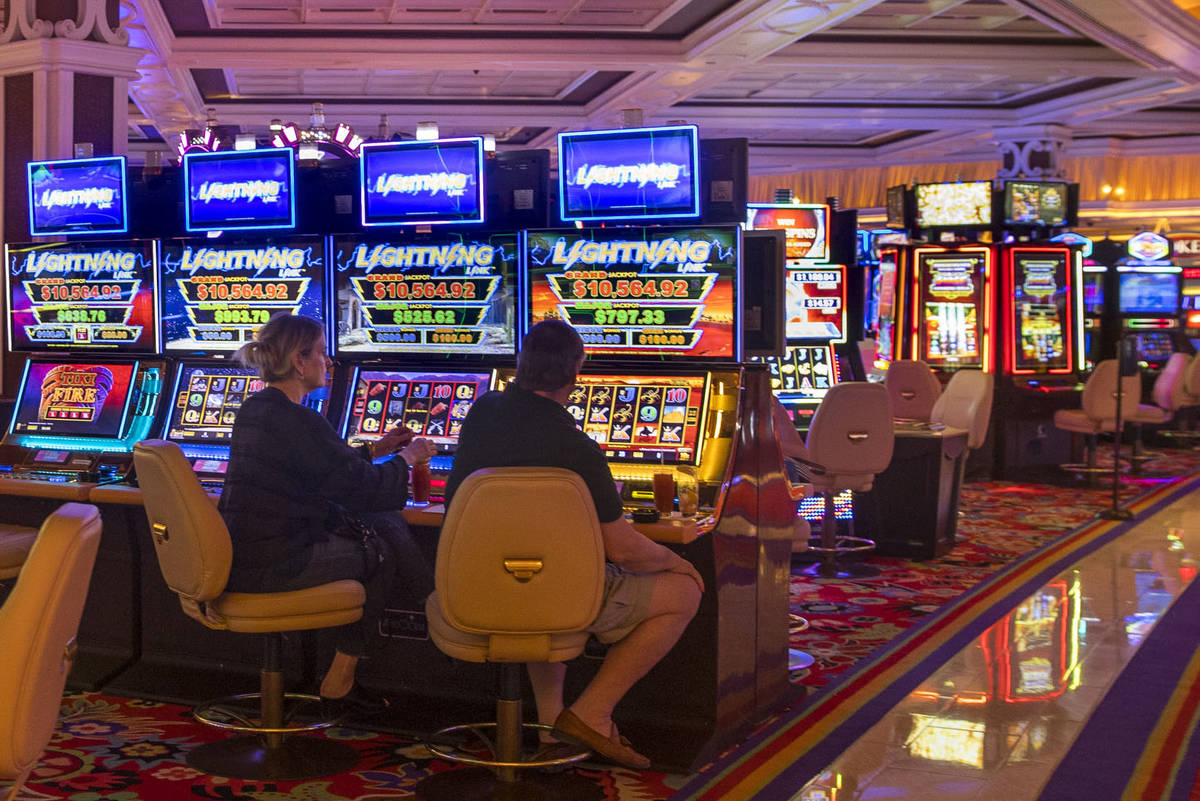Regulator gives guidance to casinos for new capacity restrictions
Nevada’s heavyweight casino operators aren’t saying how they are complying with the new capacity limits, but experts say the change isn’t likely to drastically alter casino operations, considering their floors were largely empty under the previous restrictions.
It’s industry practice for casinos to track how many people are on their floors, even before the capacity limits in the age of COVID-19, according to former MGM Resorts International executive Rick Arpin. Industry operators will count through security cameras, hand counts, and in some cases nationally, artificial intelligence, though Arpin wasn’t sure of the latter’s local prevalence.
“The casinos in Las Vegas are rarely, if ever, at capacity,” he said.
That’s especially true during the last weeks of the calendar year, a historically slow season for visitation, said Arpin, now a managing partner of audit, tax, and advisory services firm KPMG. The late-November timing of Gov. Steve Sisolak’s decision to tighten capacity limits at 25 percent inside bars, restaurants and casinos may soften the blow after months of operating at 50 percent capacity.
Spokespeople for major Strip operators MGM Resorts International, Caesars Entertainment Inc and Wynn Resorts Ltd. said Sunday their respective companies would comply with the directive. They did not provide additional comment when reached Tuesday.
“We believe the Governor made a prudent decision that will protect public health,” Wynn spokesman Michael Weaver said Sunday.
Spokespeople for Boyd Gaming Corp., Las Vegas Sands Corp. and Red Rock Resorts Inc. did not respond to requests for comment.
Las Vegas casinos were required to enforce the lower limit starting Tuesday, lasting at least three weeks. Whether the restrictions loosen depends on their success in slowing surging COVID-19 infections in the state.
For the third time in less than two weeks, Nevada on Tuesday set a record for most coronavirus cases reported in a day — 2,853 — since the start of the pandemic, according to data from the Department of Health and Human Services.
Monitoring at Las Vegas casinos may prove harder than elsewhere in the country. Local properties must factor in more entrances and an entire hotel population into their crowd control efforts, Arpin said. To reduce flow, he said, they may self-impose occupancy restraints or provide incentives for hotel guests to stay in their rooms.
Whether casinos approach things as, “Oh, now we’re at 26 percent capacity if this family walks off the elevator and into the casino,” remains to be seen, Arpin said.
A representative group for Nevada’s largest gaming operators said Sunday resorts would comply with Sisolak’s decision and cut capacity inside casinos to 25 percent of fire code maximum occupancy.
“We understand the Governor’s actions seek to balance the best interests of public health with the ongoing economic impacts,” Nevada Resort Association President Virginia Valentine said Sunday.
The Gaming Control Board, which oversees and regulates gaming licenses, indicated gaming operators won’t need to overhaul their previously approved reopening or operating plans with the new changes. Under the board’s guidance released Tuesday, retail and pools can continue to operate at 50 percent.
“Logistically there will not be any difference” in enforcing the rules, according to Gaming Control Board spokesman Michael Lawton.
He said the board has conducted about 15,000 inspections in the last several months, doling out fines or other penalties about 200 times.
Additionally, Lawton said, casinos use accounting systems to calculate “how many slot machines are being played, by whom, for what interval, and with what velocity of money.”
“The Board will vigorously enforce the Governor’s newly announced gaming floor occupancy restrictions among licensees and asks for the industry’s assistance,” he said.
The new restrictions aim to spread out people inside of casinos and reduce contact with one another, thus slowing the spread of COVID-19, according to Dr. Brian Labus, a UNLV epidemiologist and a member of Sisolak’s coronavirus advisory team. Labus said reducing from 50 to 25 percent is “kind of arbitrary,” but it’s easy to follow and halves the number of people gathering in places the state has identified as a source of spread.
“I think the real challenge is we don’t have a lot of other options” this far into the pandemic, Labus said.
Reduced capacity probably will hurt locals or drive-in reliant casinos more than the Strip giants, said Nehme Abouzeid, president and founder of LaunchVegas LLC consulting. And casino floor limits would hurt properties more if occupancy rates were higher.
“We’ve got plenty of unsold rooms anyway because we’re in the traditionally slower November-December period and no big events,” he said.
In October, Las Vegas hosted about half the number of visitors it had a year ago, but 9 percent more than it had in September, the Las Vegas Convention and Visitors Authority reported Tuesday.
Casinos understand they’re under close watch from the Gaming Control Board and could be subject to a number of penalties for failing to comply, said Becky Harris, former chairwoman of the control board. Those penalties could come as citations, fines or the suspension or termination of a gaming license.
“To my knowledge, they’re willing to bend over backwards” to ensure compliance, she said.
Adds Abouzeid, “Some of these rules may seem arbitrary, like rearranging the deck chairs on the Titanic until vaccines arrive,” but if they slow the spread of the coronavirus, then the measures are “worth it.”
The Review-Journal is owned by the family of Las Vegas Sands Corp. Chairman and CEO Sheldon Adelson.
Contact Mike Shoro at mshoro@reviewjournal.com or 702-387-5290. Follow @mike_shoro on Twitter.

















































